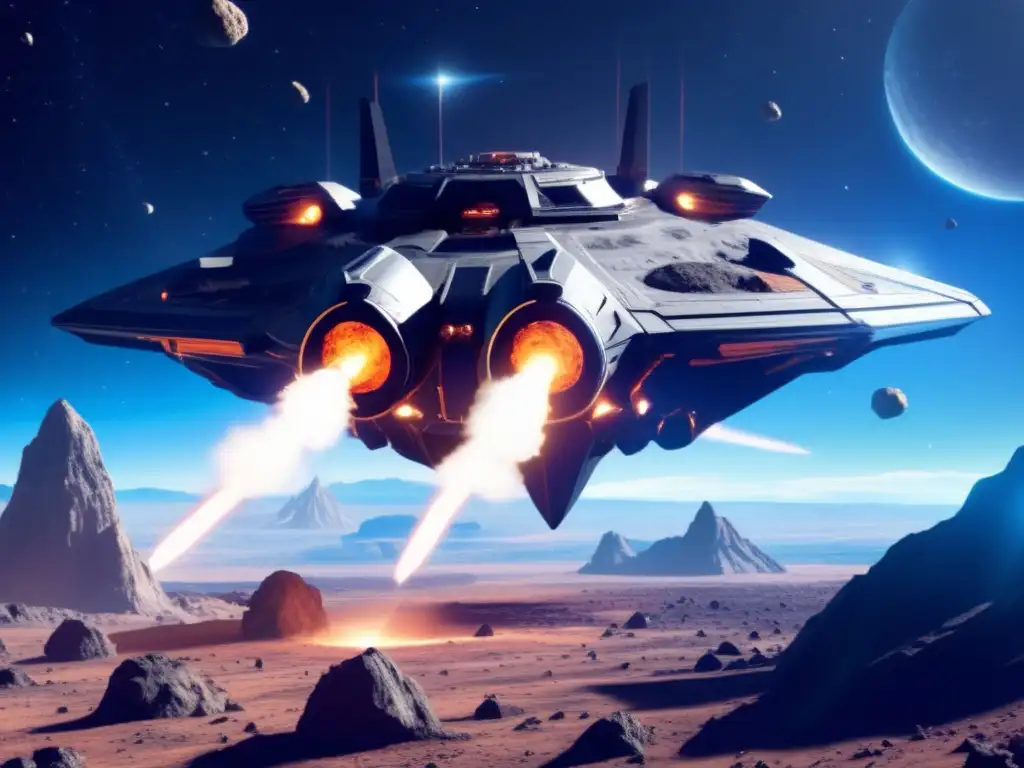Beyond Sci-Fi: How Humanity Plans To Defend Against Asteroids

Introduction
Asteroids are fascinating celestial objects that can pose a significant threat to our planet. While the probability of a catastrophic asteroid impact is relatively low, the consequences would be disastrous. Therefore, it is essential to have a robust planetary defense system to mitigate this risk.
The Role of NASA in Planetary Defense

Near-Earth Object (NEO) Detection
NASA's Planetary Defense Coordination Office (PDCO) is responsible for detecting and tracking potentially hazardous asteroids that could intersect Earth's orbit. The Near-Earth Object Surveillance Mission (NEOSM) will be launched in 2021 and will serve as a next-generation NEO detection and tracking system. According to NASA, NEOSM will help discover 90% of asteroids larger than 140 meters, which is the size range that poses a significant threat to our planet.
Asteroid Redirect Mission (ARM)
The ARM was initially proposed as a way to test technologies for human exploration of Mars. However, it can also serve as a planetary defense tool. The mission would involve capturing an asteroid with a robotic spacecraft and redirecting it into a stable orbit around the moon. This would provide a platform for crewed missions to study the asteroid and learn about its composition and structure while serving as a blueprint for deflecting hazardous asteroids away from Earth.
The Double Asteroid Redirection Test (DART) Mission
The DART mission is another approach to planetary defense being developed by NASA. It involves launching a small spacecraft towards a non-threatening asteroid in the near future. Upon impact, it would change the asteroid's trajectory, demonstrating the feasibility of deflecting hazardous asteroids away from Earth.
Private Initiatives in Planetary Defense

The B612 Foundation
The B612 Foundation is a nonprofit organization founded by former NASA astronauts that aims to protect Earth from asteroid impacts. The foundation is developing the Sentinel Space Telescope, a dedicated space-based NEO detection system that will complement ground-based observations. The telescope will help identify potentially hazardous asteroids and provide early warnings for asteroid impacts.
Planetary Resources
Planetary Resources is a private company focused on asteroid mining. In addition to advancing space resource utilization, the company also sees asteroid mining as a way to mitigate the threat of asteroid impacts. By mining valuable resources from asteroids, it can reduce the need for mining on Earth, reducing the risk of environmental degradation while also providing the economic incentive to invest in planetary defense technologies.
New Technologies for Planetary Defense

Kinetic Impactors
A kinetic impactor is a spacecraft that collides with an asteroid to change its orbit. This technology has been proposed for use in the DART mission. As the spacecraft hits the asteroid, it transfers its momentum to the asteroid, altering its trajectory away from Earth.
Gravity Tractors
A gravity tractor is a spacecraft that uses its gravitational attraction to deflect an asteroid's trajectory. This technology requires the spacecraft to fly in close proximity to the asteroid for an extended period to create enough gravitational force to effect the trajectory change.
Laser Ablation
Laser ablation involves firing a high-powered laser at an asteroid's surface to heat and vaporize material, creating a small amount of thrust that can alter the trajectory of the asteroid. This technology is being developed by NASA as part of its Asteroid Deflection Research Program.
Frequently Asked Questions

-
What are the chances of an asteroid impact?
While the chances of an asteroid impact are relatively low, the consequences would be catastrophic, making planetary defense a critical issue.
-
How do we detect and track potentially hazardous asteroids?
NASA's PDCO is responsible for detecting and tracking potentially hazardous asteroids using ground-based and space-based telescopes.
-
What technologies are being developed for planetary defense?
Several technologies are being developed, including kinetic impactors, gravity tractors, and laser ablation.
-
What private initiatives are there for planetary defense?
The B612 Foundation and Planetary Resources are two notable private initiatives in planetary defense.
-
What is the main goal of asteroid mining?
Asteroid mining aims to advance space resource utilization while also providing the economic incentive to invest in planetary defense technologies.
Conclusion
Planetary defense is an essential topic that requires ongoing research and development to ensure that we are adequately prepared for potential asteroid impacts. The advances made in planetary defense technologies and space exploration, coupled with the efforts of private organizations, provide hope that we can mitigate the risk of asteroid impacts effectively.
It is critical to continue to emphasize the importance of planetary defense and support organizations such as NASA, the B612 Foundation, and Planetary Resources in their efforts to protect our planet. Join us in the conversation about planetary defense by sharing your thoughts in the comments section, subscribing to www.asteroidrealm.com, and staying up-to-date with the latest news on asteroids and planetary defense technologies.
Additional Resources

For those interested in delving deeper into the asteroid topic, the following resources are recommended:
 Saving The Planet: Current Approaches In Asteroid Impact Prevention
Saving The Planet: Current Approaches In Asteroid Impact Prevention Planetary Shield: Technologies For Asteroid Defense
Planetary Shield: Technologies For Asteroid Defense Deflecting Doom: Strategies To Prevent Asteroid Collisions
Deflecting Doom: Strategies To Prevent Asteroid CollisionsIf you want to discover more articles similar to Beyond Sci-Fi: How Humanity Plans To Defend Against Asteroids, you can visit the Planetary Defense category.
Leave a Reply

Articulos relacionados: